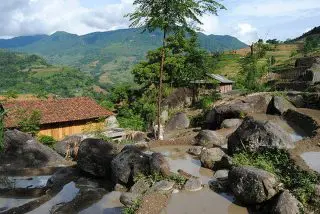
Xin Man, Ha Giang: What Makes This Region Special?
Xin Man district has a complex terrain, located in the upper Chay River mountain range, so it is mainly hills with steep slopes and divided by many streams.
Nestled in the breathtaking scenery of Ha Giang Province in northern Vietnam, the H’mong King’s Palace, also referred to as Vuong Palace or Dinh Vua Meo, is a remarkable historical and architectural site. This majestic palace offers visitors an unparalleled opportunity to delve into the rich cultural heritage of the H’mong people while also highlighting a complex history shaped by colonialism and regional governance. With its intricate design, captivating history, and cultural significance, the H’mong King’s Palace stands as a testament to the legacy of the H’mong community in Vietnam.
The H’mong King’s Palace was built between 1898 and 1903 under the leadership of Vuong Chinh Duc, who was regarded as the head of one of the most powerful H’mong families during that era. Officially completed around 1907, the palace’s construction came at an extraordinary cost, amounting to approximately 150 billion VND in today’s currency, equivalent to about 6.36 million USD. Serving as a residence for the H’mong kings, the palace played a pivotal role in the region’s administration during the French colonial era, marking its importance not just as a royal dwelling but also as a governmental hub.
Vuong Chinh Duc, recognized as the “king” of the H’mong by the French administration, designed this palace reflecting the political significance of the H’mong people at the time. The architectural style showcases a mélange of traditional H’mong design elements intertwined with influences from various cultural contexts, particularly French colonial and Chinese aesthetics. This unique integration of different styles beautifully illustrates the cross-cultural interactions prevalent in the early 20th century.
Spanning a vast area, the H’mong King’s Palace encompasses multiple structures, comprising a total of 64 rooms organized around three main courtyards. The architectural layout adheres to the principles of feng shui, emphasizing harmony with the environment. Careful consideration is given to the orientation and arrangement of various buildings, creating a spatial experience rooted in traditional beliefs.
Some standout features of the palace’s architecture include:
The H’mong King’s Palace transcends mere architectural accomplishment; it serves as a vital connection to the intricate ethnic and political dynamics of northern Vietnam during the early 20th century. The palace highlights the sophisticated political structures that existed among ethnic minority communities, providing invaluable insights into traditional social hierarchies, religious practices, and cultural customs of the H’mong people.
Today, the palace functions as both a historical monument and a vibrant cultural center. It actively hosts a variety of traditional festivals and educational programs aimed at preserving and celebrating H’mong culture. This dual role ensures that the palace remains not only a site of tourism but also a focal point for cultural continuity and community engagement.
Visitors to the palace can witness traditional H’mong customs and practices firsthand, allowing for a deeper understanding of the community’s heritage. Engaging with locals and participating in cultural events contribute to the preservation of these traditions, forging a stronger bond between the past and present.
For those eager to explore the H’mong King’s Palace, it is conveniently located about 15 kilometers from Dong Van and is accessible through scenic routes that showcase the beauty of the Dong Van Karst Plateau Geopark. The journey itself is a feast for the senses, with stunning landscapes and local villages along the way.
During a visit, guests can expect the following:
The H’mong King’s Palace stands as a remarkable testament to the resilience and cultural pride of the H’mong people, representing an essential chapter of Vietnam’s unique history. As visitors explore the palace’s stunning architecture, they encounter not just a relic of the past but also a narrative that continues to shape the identity of the H’mong community today. The palace remains a symbol of cultural heritage and a place where history and tradition intertwine, inviting all who visit to partake in its rich legacy. Through appreciation and understanding of such sites, we can honor and celebrate the diverse cultures that contribute to the vibrant tapestry of Vietnam’s society.

Xin Man district has a complex terrain, located in the upper Chay River mountain range, so it is mainly hills with steep slopes and divided by many streams.
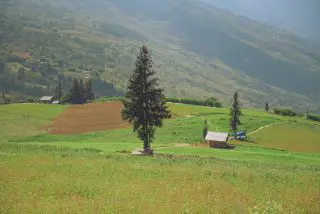
Venture into the untamed beauty of northern Vietnam with Vietnam Treasure and discover the magic of Suoi Thau Steppe. This captivating landscape offers a unique blend of cultural immersion and breathtaking natural scenery far from the bustling tourist trails.
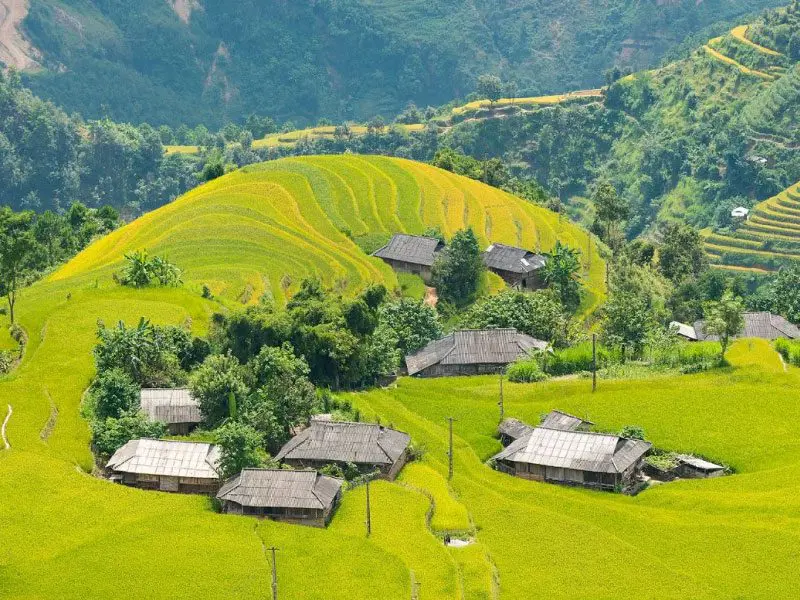
Nestled high in the mountainous region of Ha Giang, Phung Village (Ban Phung) is a hidden gem offering a glimpse into the authentic beauty and culture of Northern Vietnam.
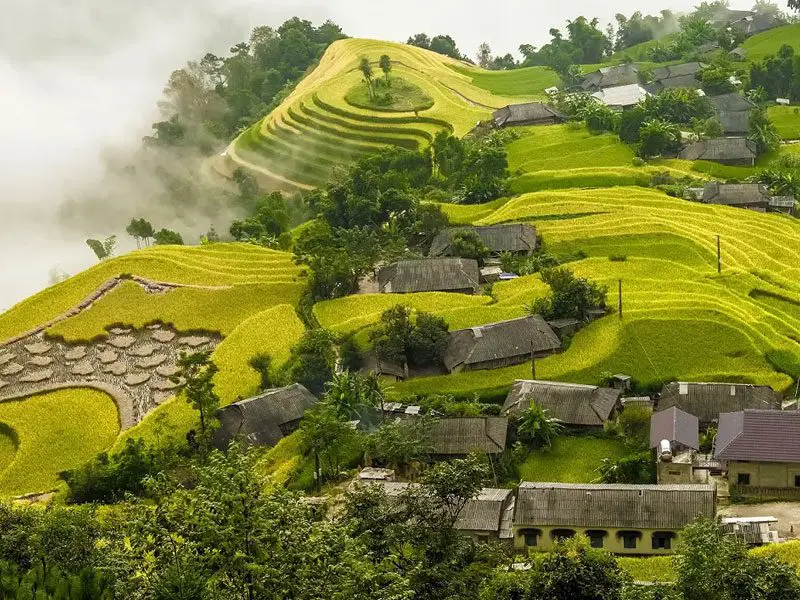
Stop at Thong Nguyen Village, and you will discover amazing beauty. This is a rugged and difficult mountainous area. Many people may think that nothing is interesting here. Join Vietnam Treasure to discover the beauty of Thong Nguyen Village.
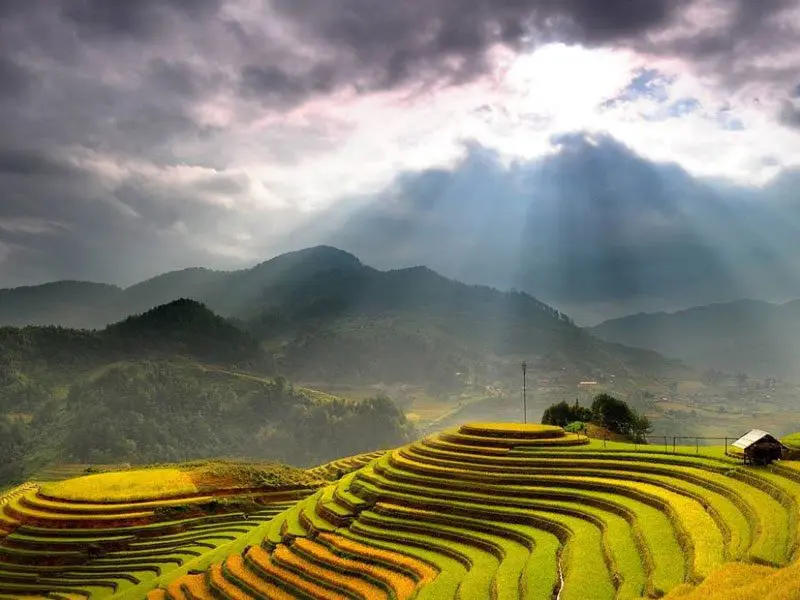
Its name, Hoàng Su Phì or Hoàng Thụ Bì, means “the yellow bark” in the Hmong language. It indicates the woods of weeping cypress, which is a local specialty.
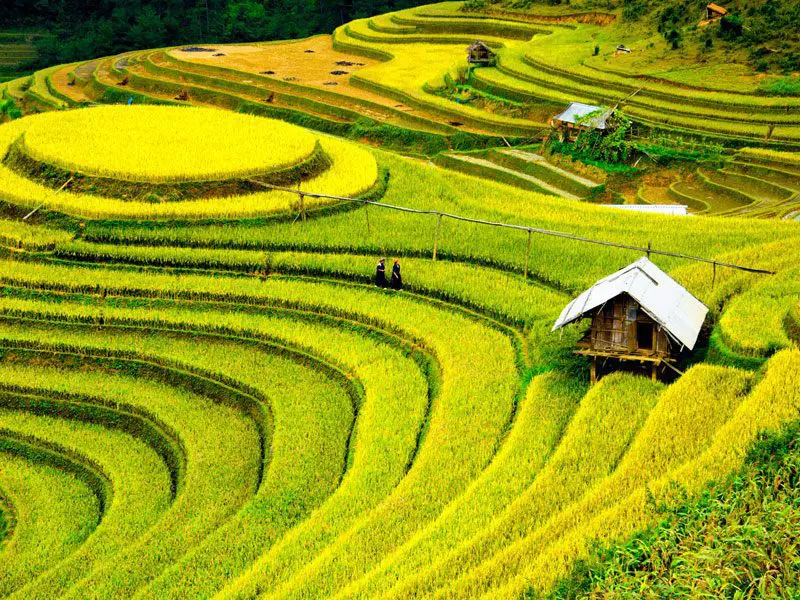
Hoang Su Phi terraced fields possess an undeniable charm, creating a mesmerizing scene—journey to Ha Giang with Vietnam Treasure to witness the brilliant golden rice harvest season. Although present in many countries, especially in Southeast Asia, terraced fields in Vietnam are deeply associated with the traditional agricultural activities of many ethnic groups in the northern mountainous region, such as the H’Mong, Dao, Nung, La Chi and Ha Nhi.
Tu San Canyon (Mèo Vạc district), the deepest canyon in Vietnam. It has a depth of about 800 m, a length of 1.7 km, and cliffs that slope 70° to 90°.
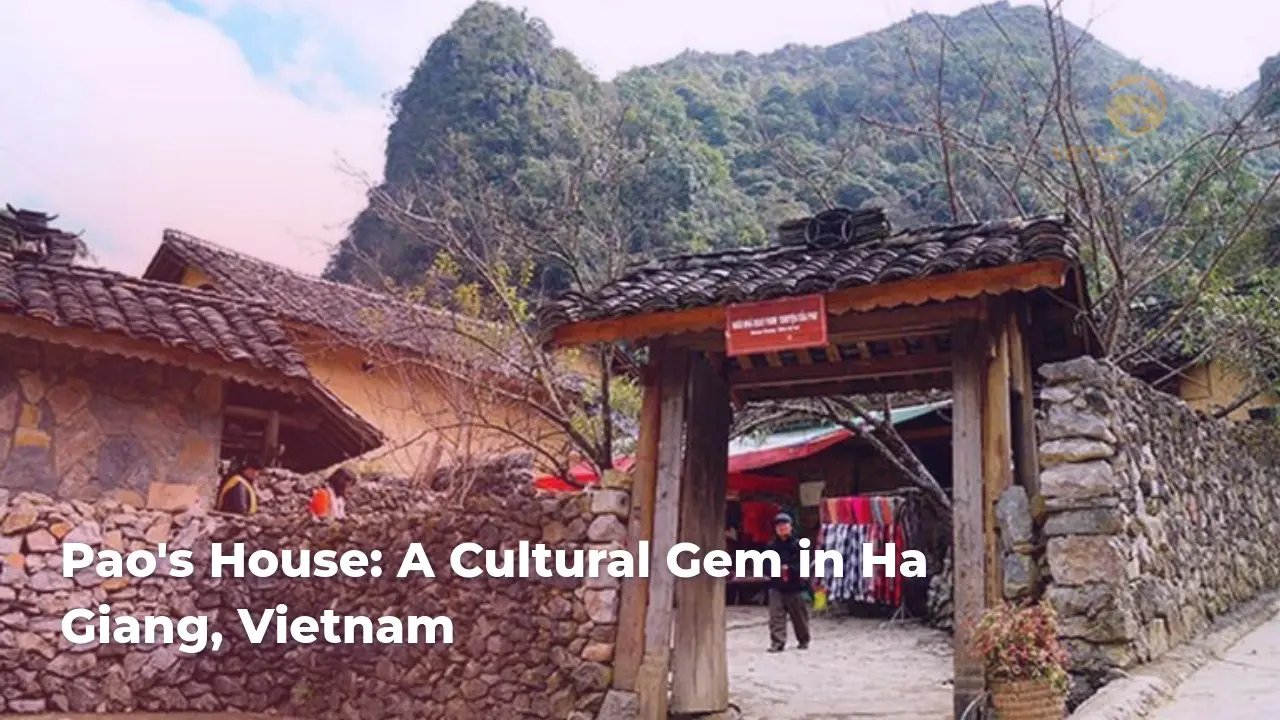
Discover the charm of Pao’s House, Ha Giang. Dive into local culture and scenic beauty. Plan your adventure now!
Copyrights @2025 Vietgo Travels. Terms and Conditions Privacy Policy
Hotline
+84 855 452 888 (Viet Nam) / +1 (206) 665 3090 (US)
Email: [email protected]
Website: www.vietgotravels.com
Head Office:
No. 23 Lo Su Street, Hoan Kiem District, Ha Noi, Viet Nam.
Viet Nam’s branch:
No. 35 Hang Quat Street, Hoan Kiem District,
Ha Noi, Viet Nam.
US:
831 41st Pl, Everett, WA 98201, USA